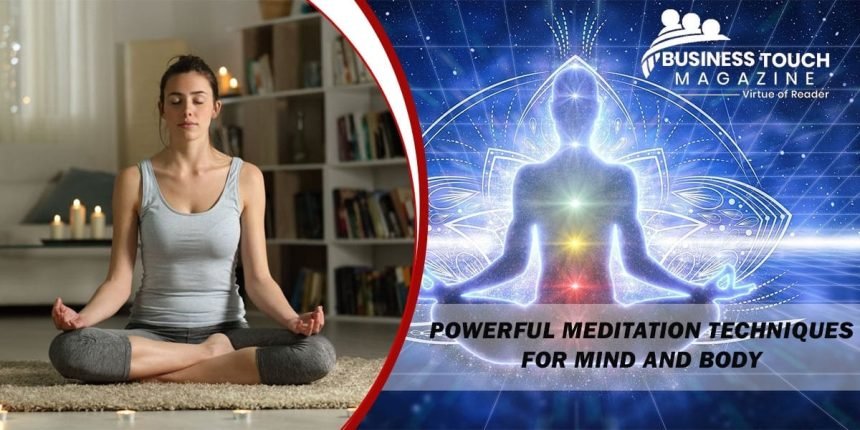To cultivate an awareness of the present moment, meditation has been employed for thousands of years.
Focus and concentration, physical connection, acceptance of challenging emotions and even a shift in awareness may all be part of the exercise. Stress reductionand increased immunity have been shown to be among the many physical and psychological advantages.
Meditation is a practice that may be found in a wide variety of religious and philosophical traditions, although the method itself is not religious in nature. In societies across the globe, it is still performed to bring about a feeling of quiet, serenity, and harmony.
A rising number of people are turning to meditation as a way to cope with the pressures of modern life.
While there is no right or wrong method to meditate, finding a routine that works for you is critical.
Listed below are some of the most common forms of meditation:
1. Mindfulness meditation
The most widely studied and practiced kind of meditation in the West is mindfulness meditation, which has its roots in Buddhist teachings.
The goal of mindfulness meditation is to cultivate a state of awareness in which you are fully present with your thoughts. You don’t judge or identify with the ideas. You don’t have to do anything other than keep an eye out for patterns.
Concentration and awareness are combined in this technique. While observing any physiological sensations, thoughts, or emotions, you may find it beneficial to concentrate on an item or your breath.
People who don’t have access to an instructor might benefit from practicing this kind of meditation since it is simple to do so on one’s own.
2. Spiritual meditation
Nearly every religious and spiritual tradition makes use of some kind of spiritual meditation.
There are as many different styles of spiritual meditation as there are spiritual traditions across the globe. Many of the meditation methods presented here might be categorized as spiritual meditations.
Spiritual meditation, according to a 2017 study, aims to acquire a deeper understanding of spiritual/religious significance and a relationship with a higher power. The following are a few examples:
• Christian contemplative prayer
• Sufi dhikr (remembrance of God)
• Jewish kabbalistic practices
At home or in a place of worship, spiritual meditation may be done. Those who want spiritual development and a stronger connection to a higher power or spiritual force might benefit from this practice.
3. Focused meditation
Using one or more of the five senses while meditating is known as “focused meditation.”
It’s possible to use internal or external forces to assist you concentrate your attention, such paying attention to your breath.
Examples include:
• counting mala beads
• listening to a gong
• staring at a candle flame
• counting your breaths
• moon gazing
Beginners may find it difficult to maintain concentration for more than a few of minutes at a time, despite the apparent simplicity of the technique.
Whenever your thoughts stray from your practice, just return to it and concentrate.
Those who desire to improve their concentration and attention might benefit from this activity.
4. Movement meditation
Some of these practices, which are sometimes referred to as movement meditation, are not as well known as yoga. These are:
• walking
• gardening
• qi gong
• tai chi
• other gentle forms of movement
It’s a sort of active meditation that helps you connect more deeply with your body and the present moment via movement.
Movement In order to cultivate a sense of self-awareness and serenity of mind, meditation is a useful tool.
5. Mantra meditation
Many religions, including Hinduism and Buddhism, emphasize mantra meditation. This kind of meditation relies on the calming effects of a steady stream of music to help you relax. One of the most prevalent is “om,” however it may be any word, phrase, or sound.
You have the option of saying your mantra softly or loudly. In time, you will become more aware and in touch with your surroundings after saying the mantra. A deeper degree of awareness may be gained by doing this.
Meditation using a mantra is popular with some individuals because they find it simpler to concentrate on a single word than their breath. Others like the sensation of their bodies trembling in response to the music.
In addition, this is a wonderful exercise for those who dislike stillness and like repetition.
6. Transcendental Meditation
There have been several scientific research on Transcendental Meditation (TM), a sort of meditation.
Maharishi Mahesh Yogi invented TM, which is a method for quieting the mind and bringing about a condition of serenity and tranquility. TM practitioners are the only ones qualified to instruct others in the technique’s use of mantra.
Those seeking a more approachable path to the depths of meditation might benefit greatly from this kind of meditation.




